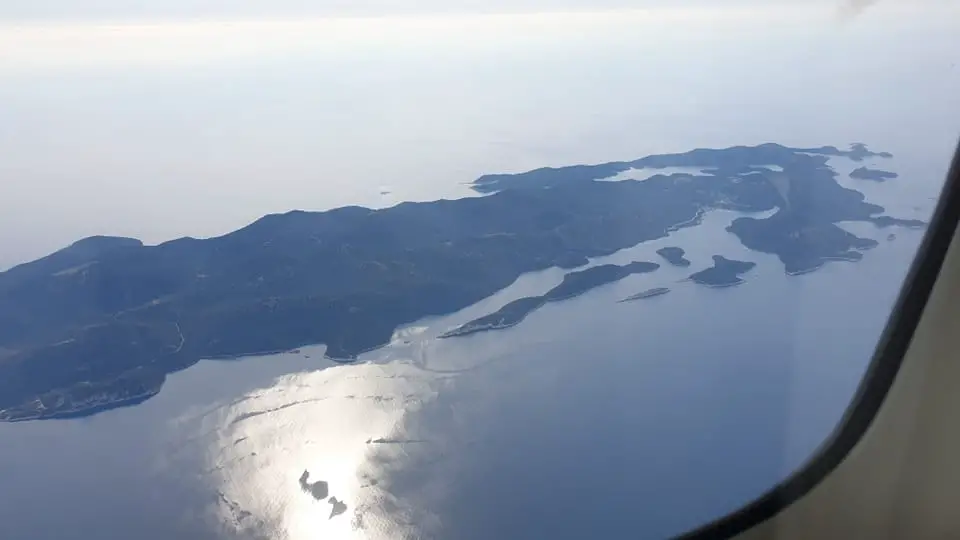The Croatian motorways are excellent. Expensive, but excellent.
And with so many projects on the TCN plate at the moment, from Dubrovnik to Osijek, travelling between destinations can be not only expensive, but time-consuming.
Earlier this month, I had a long trip starting in Zagreb, which took in Split, Dubrovnik, Tivat, Tirana, Dubrovnik, Osijek, and back to Zagreb. As my car was in the garage, and with fuel prices rising due to the Ukraine conflict, I decided to use public transport for the journey, which was fine in theory, but how was I going to get from Dubrovnik to Osijek? Even if I had my car, Google told me that I had a tortuous 8-hour drive through the poor roads and eager traffic police of Bosnia and Herzegovina.
“Why don’t you fly?” a friend asked. “No, not with Croatia Airlines, but check out the amazing service of Trade Air.”
Trade Air. A Croatian airline based in Osijek, but which does much of its business outside of Croatia. I was aware from blogging over the years that they had some curious routes all over Croatia, but I had never considered them before. I decided to take a look.
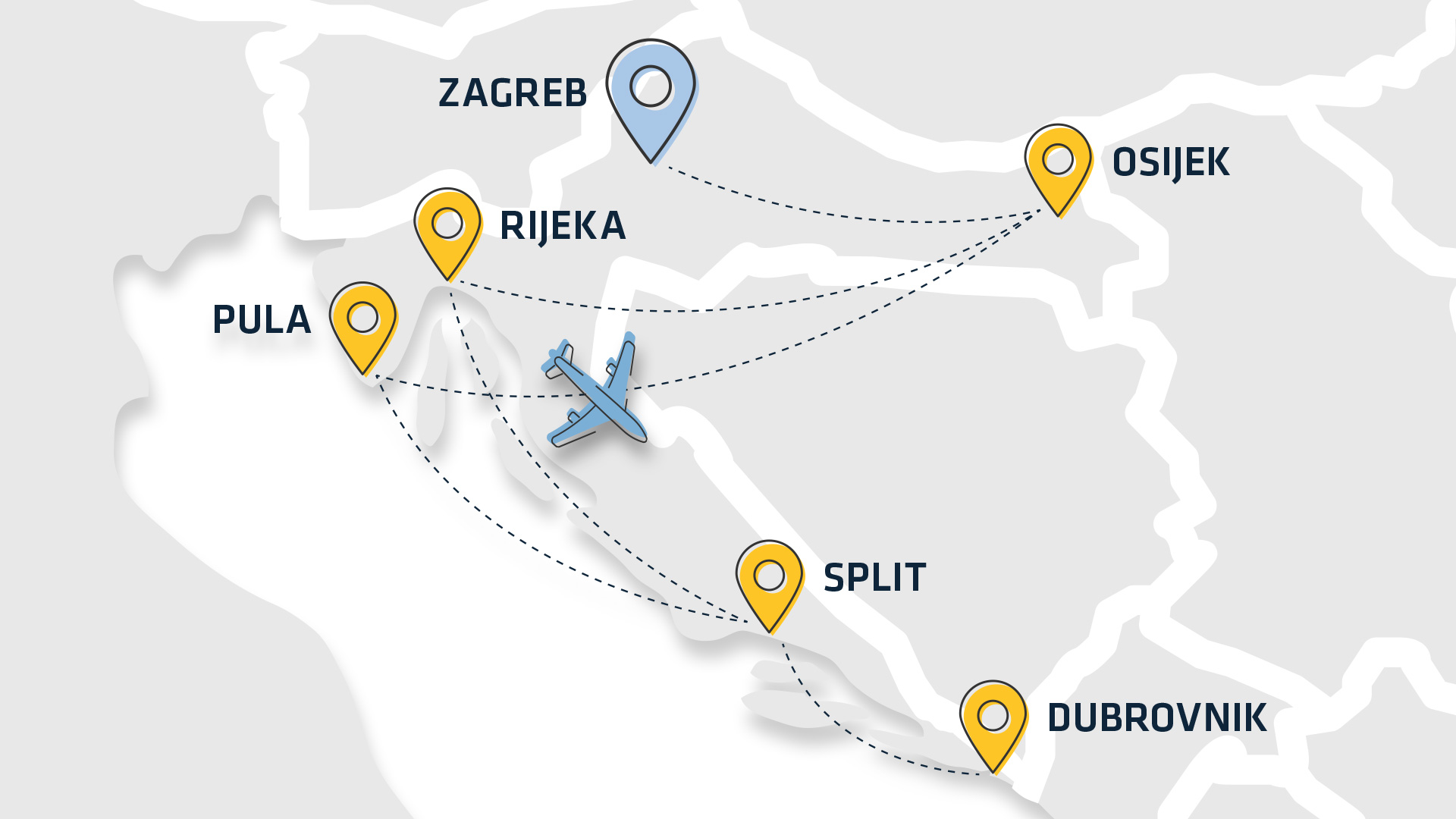
The routes, part of a Public Service Obligation (PSO) tender, seemed to have been prepared especially for me. Apart from the handy connections (the Dubrovnik to Osijek flight was a little circuitous, but it was less than 3.5 hours door to door), I had never come across anyone who had actually flown these routes before, apart from one aviation geek friend who told me that the Zagreb to Osijek route is legendary among the aviation community as being fairly pointless, with little take up – an expensive subsidy.
Wait, there is a flight from Zagreb to Osijek, which is only 2.5 hours away by car, 3 hours by bus? Not only a flight, but a flight twice a day three times a week. And with a ticket price of just 30 euro one way, rather a cheap deal indeed. As I had one overnight stay in Osijek, I booked the 06:30 flight the next day – I would be in central Zagreb for 08:00 and ready for a new business day.
But first, I had to get to Osijek from Dubrovnik. As part of its PSO mandate, Trade Air covers different routes through the working week, connecting Dubrovnik, Split, Pula, Rijeka, Osijek and Zagreb with its 19-seater plane. As luck would have it, on my day of travel, the Dubrovnik flight to Osijek was making quick stops at Split and Rijeka Airports (on the island of Krk). When I compared the price of the ticket (450 kuna) to the cost of fuel, tolls, time, and frustration had I gone by road, it looked a bargain indeed. And that was without the views.
So how was it?
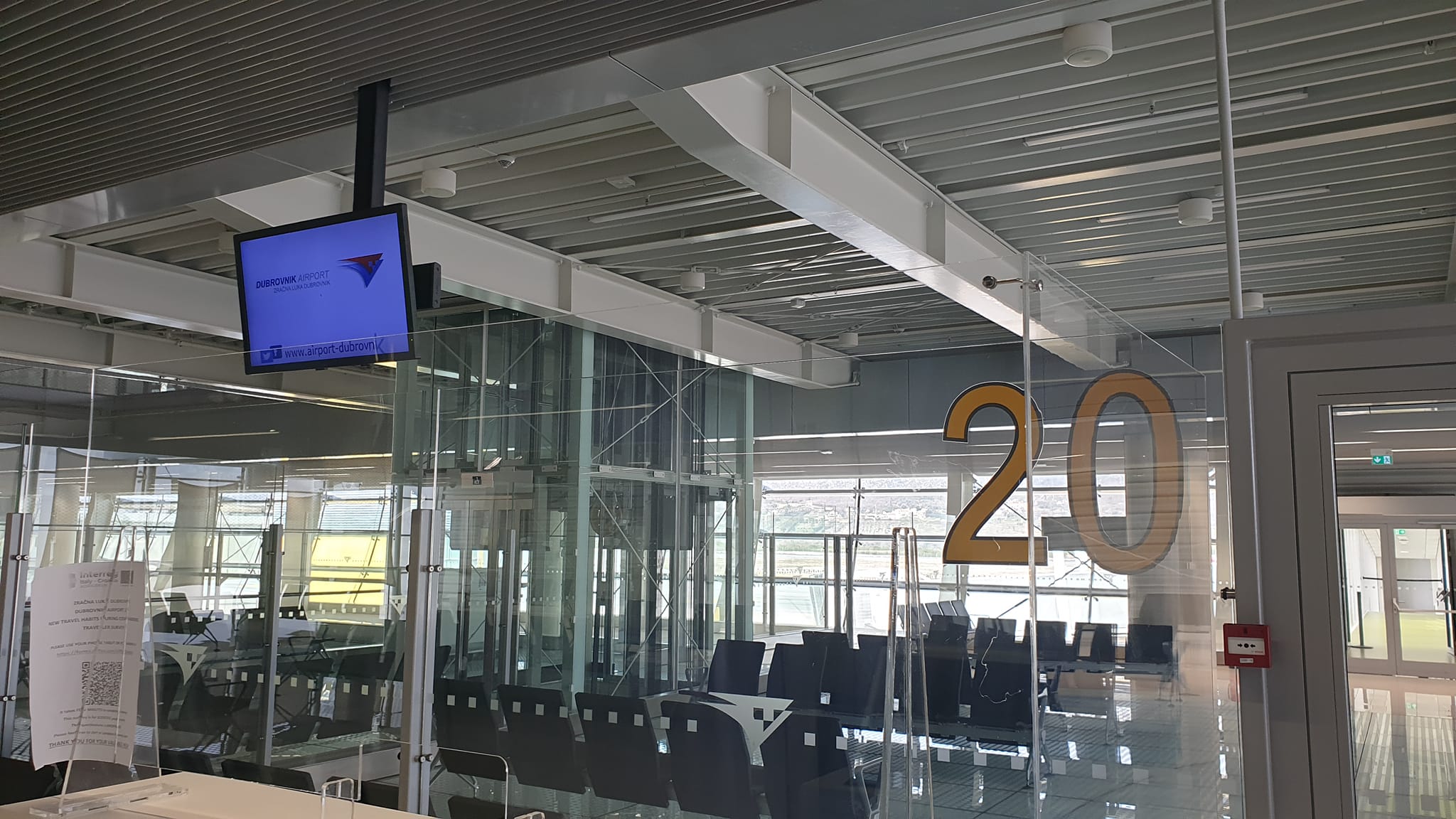
I was curious to see how many people would be on the flight. 10 passengers from Dubrovnik to Split, plus flight attendant – more than half-full in mid-March.
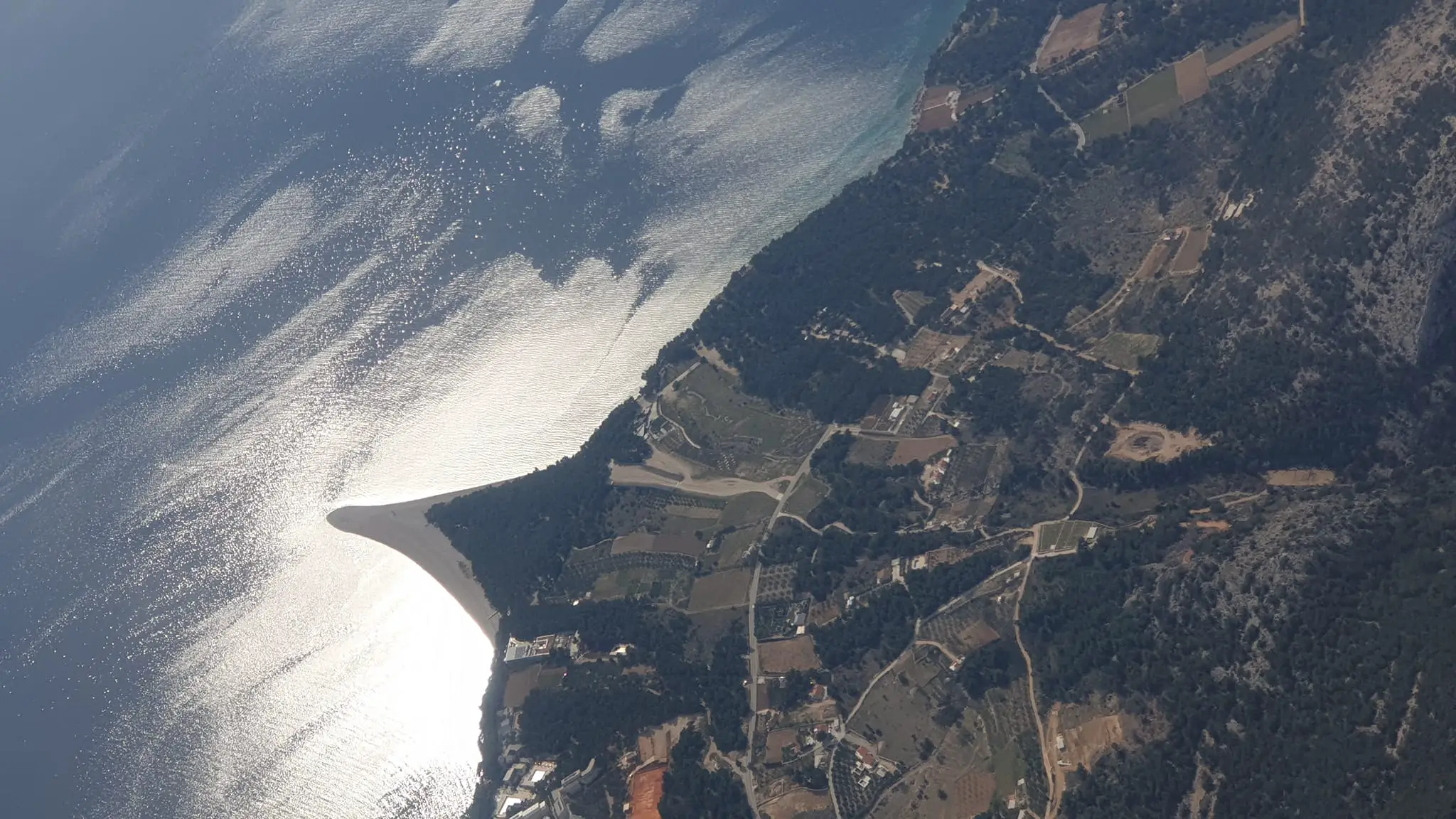
In many ways, the flight took me back to the era of the Croatian seaplanes of 2014-6 – a small plane hugging the idyllic Croatian coastline, flying low, and affording the very best bird’s eye views out there. Having enjoyed Mljet (see lead photo), passing over Croatia’s most iconic beach at Zlatni Rat in Bol on the island of Brac, while waving to my mother-in-law in Jelsa across the water on Hvar.
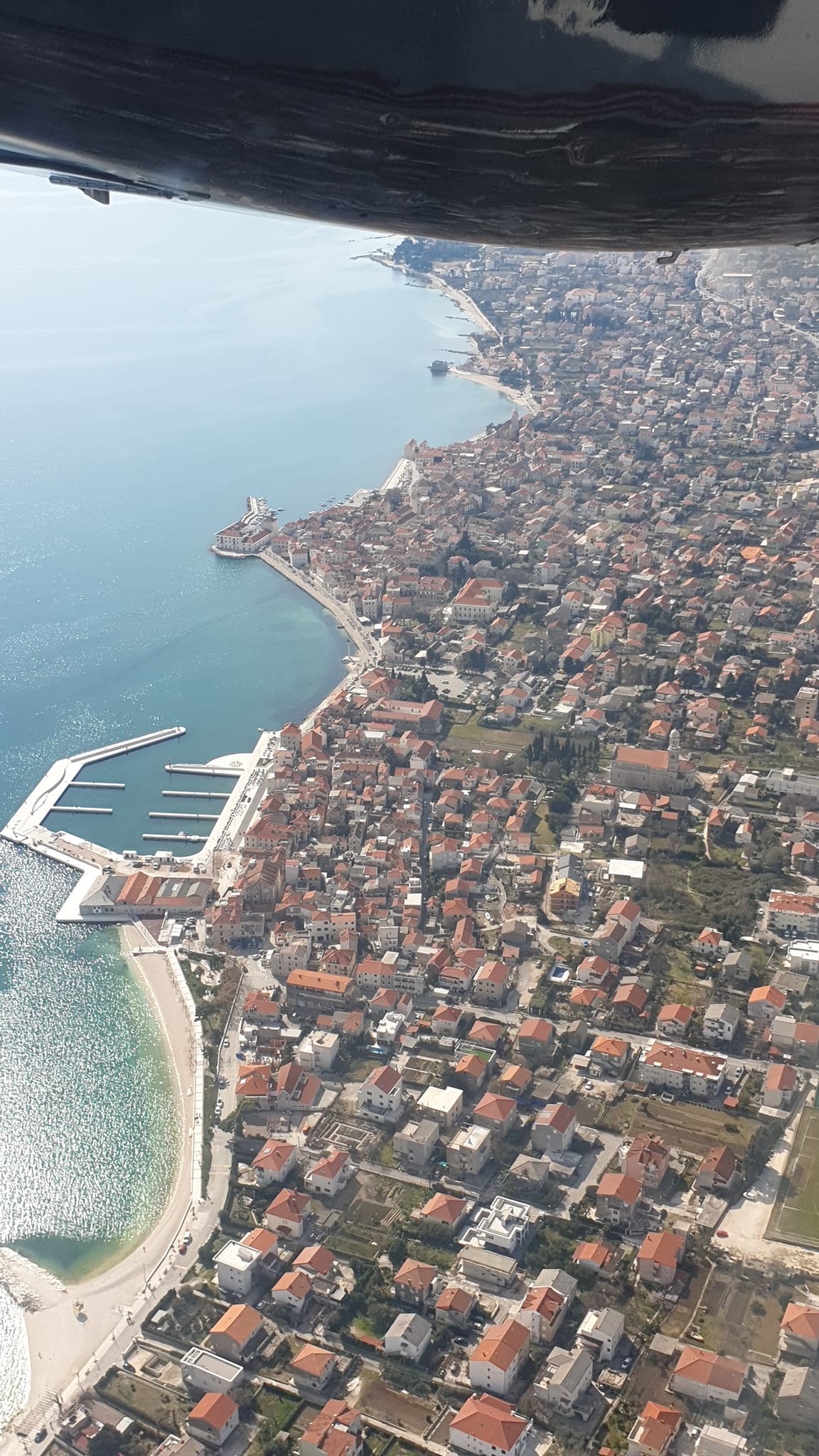
We left Dubrovnik on time at 13:20, and after 30 gorgeous sun-kissed minutes of island gazing, a gentle approach to Split Airport in the March sun.
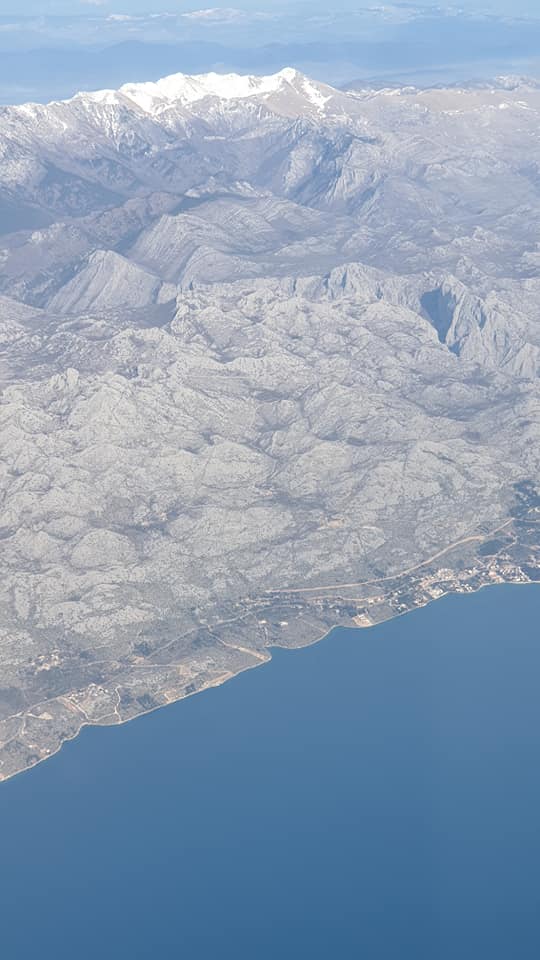
A stop for 30 minutes to refuel and pick up extra passengers – 14 on the short flight north to Rijeka.
And, rather than looking at more perfect islands, I took my seat on the other side of the plane for this leg, and was rewarded with the fabulous combination of sun, sea, snow.
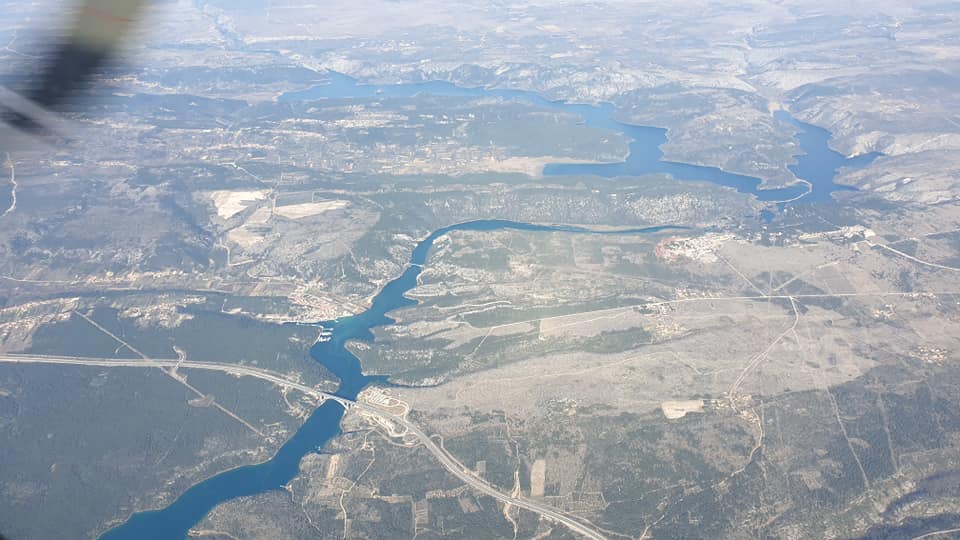
As well as plenty of time to reflect on the vast emptiness of this beautiful country. So much of it completely untouched.
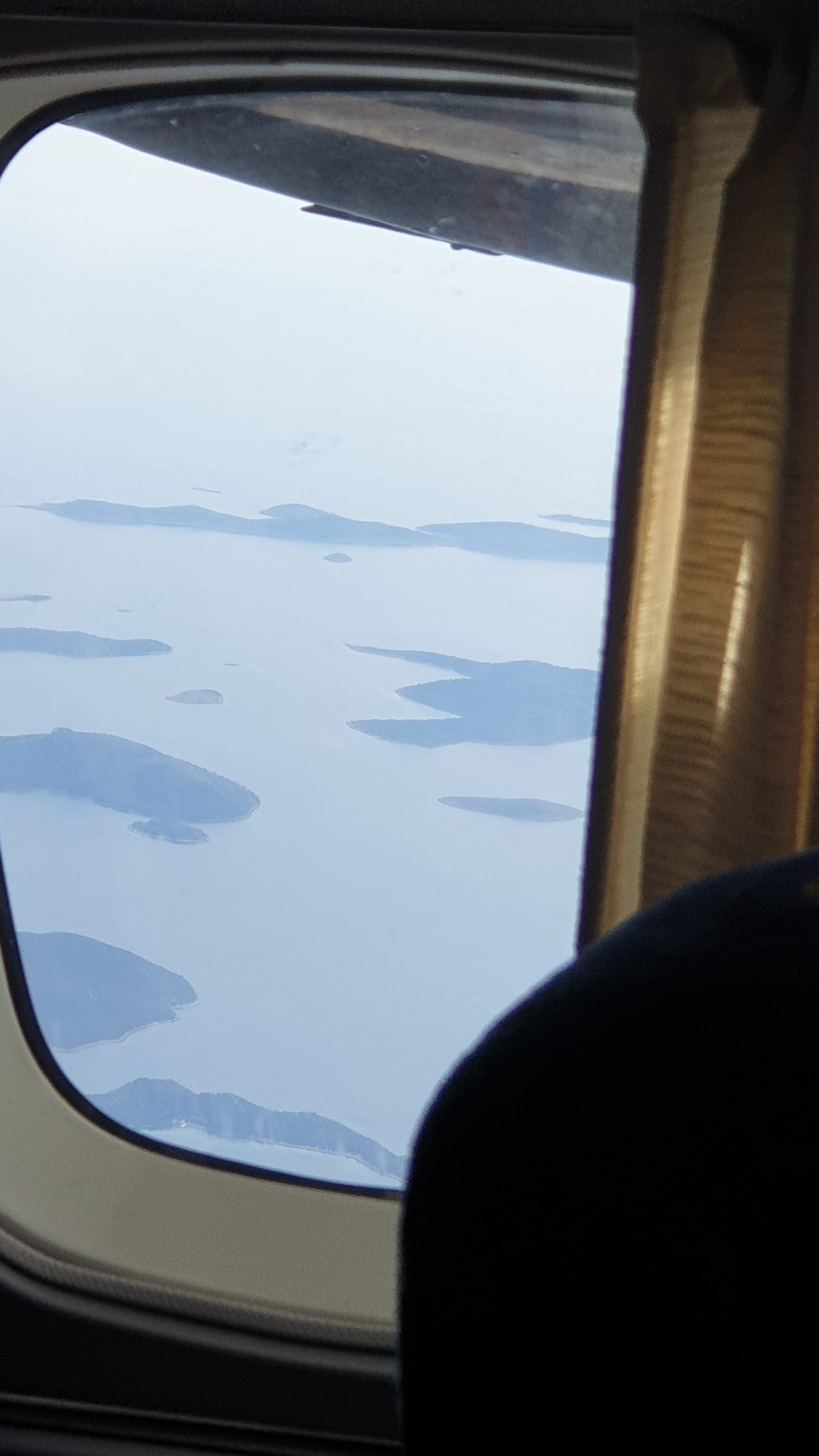
And if you do have island viewing FOMO on the right side of the plane, simply look left.
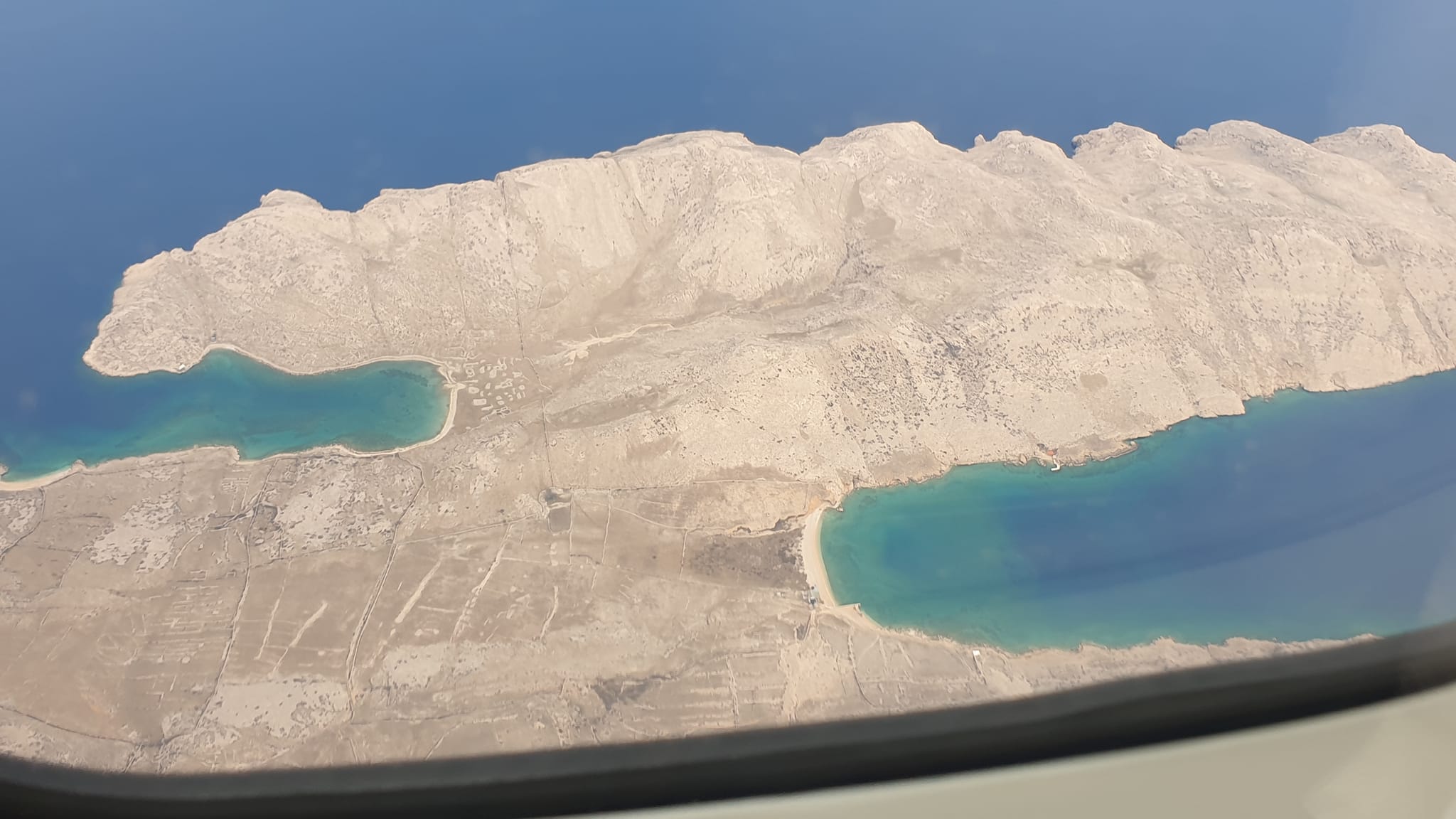
One of the joys of the flight is flying low over the islands, so that you can pick out individual idyllic spots, such as this one with one small house having the bay to itself on Vela Luka on the island of Krk. Croatia has more than a thousand islands, each unique in its own way, and there are few better ways to get an overview than this flight.
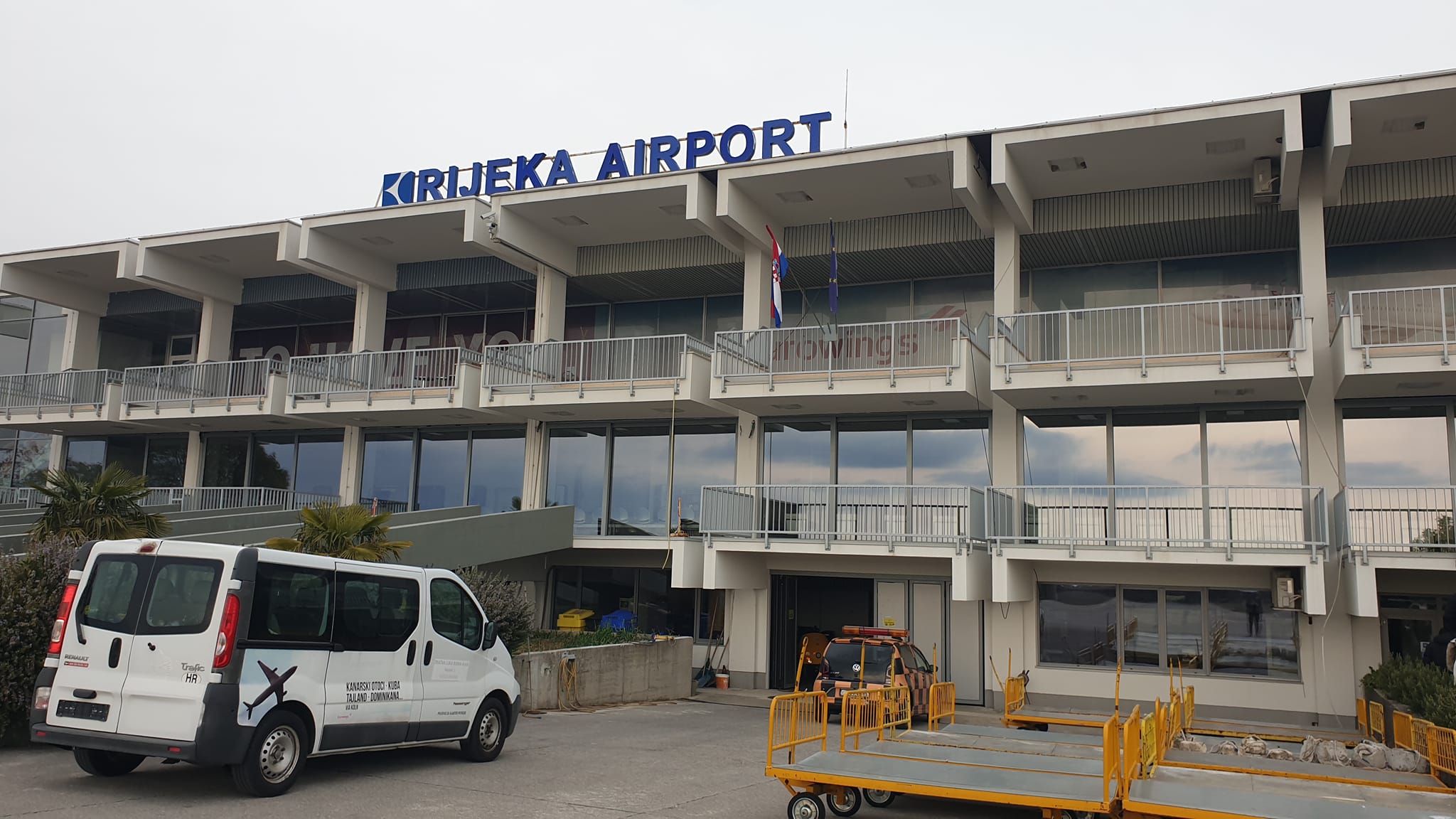
Some island hopping, as we landed at Rijeka Airport. Time check 15:15.
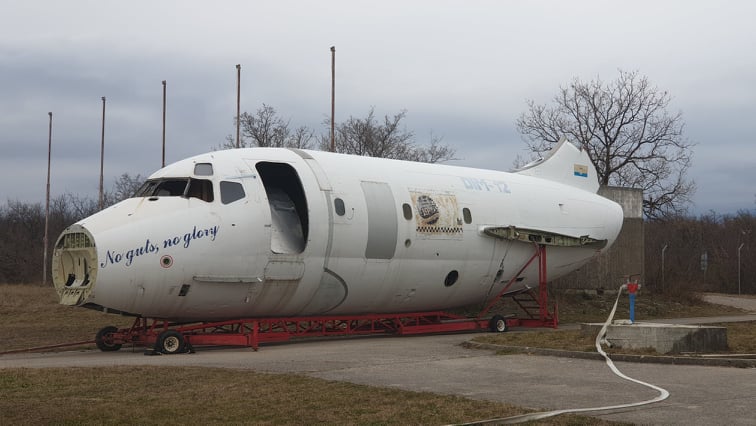
A 30-minute stopover on Krk, enough time to check out some of the interesting planes which have taken up permanent residence close to the runway. Anyone know the story of this baby? Please contact me on paul@total-croatia-news.com Subject Rijeka plane.
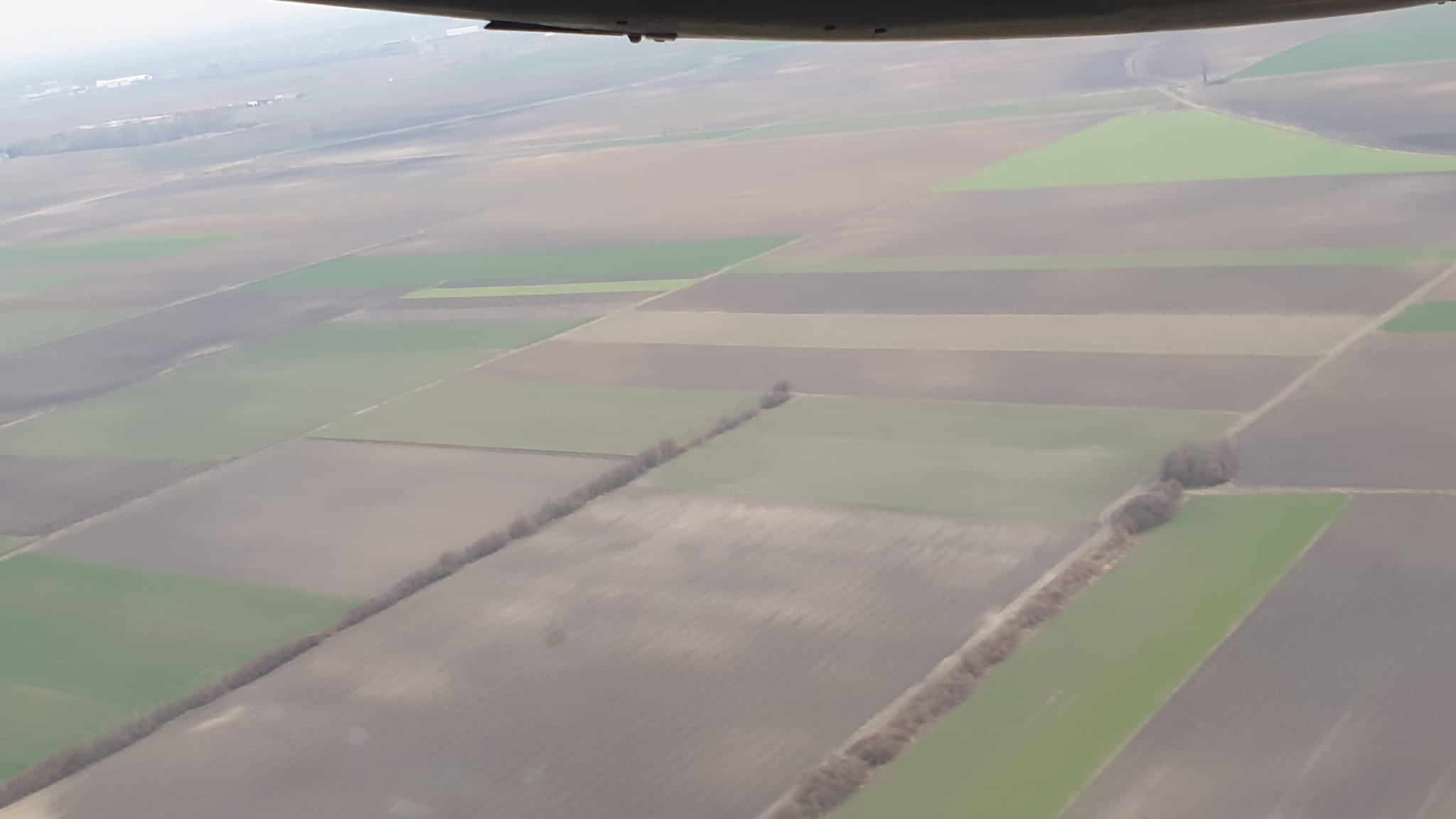
Airborne again, this time heading east, with 9 passengers for the final leg to Osijek. Slavonia, my Slavonia. Once the breadbasket of the region. Could it be again? SO much land, so much potential.
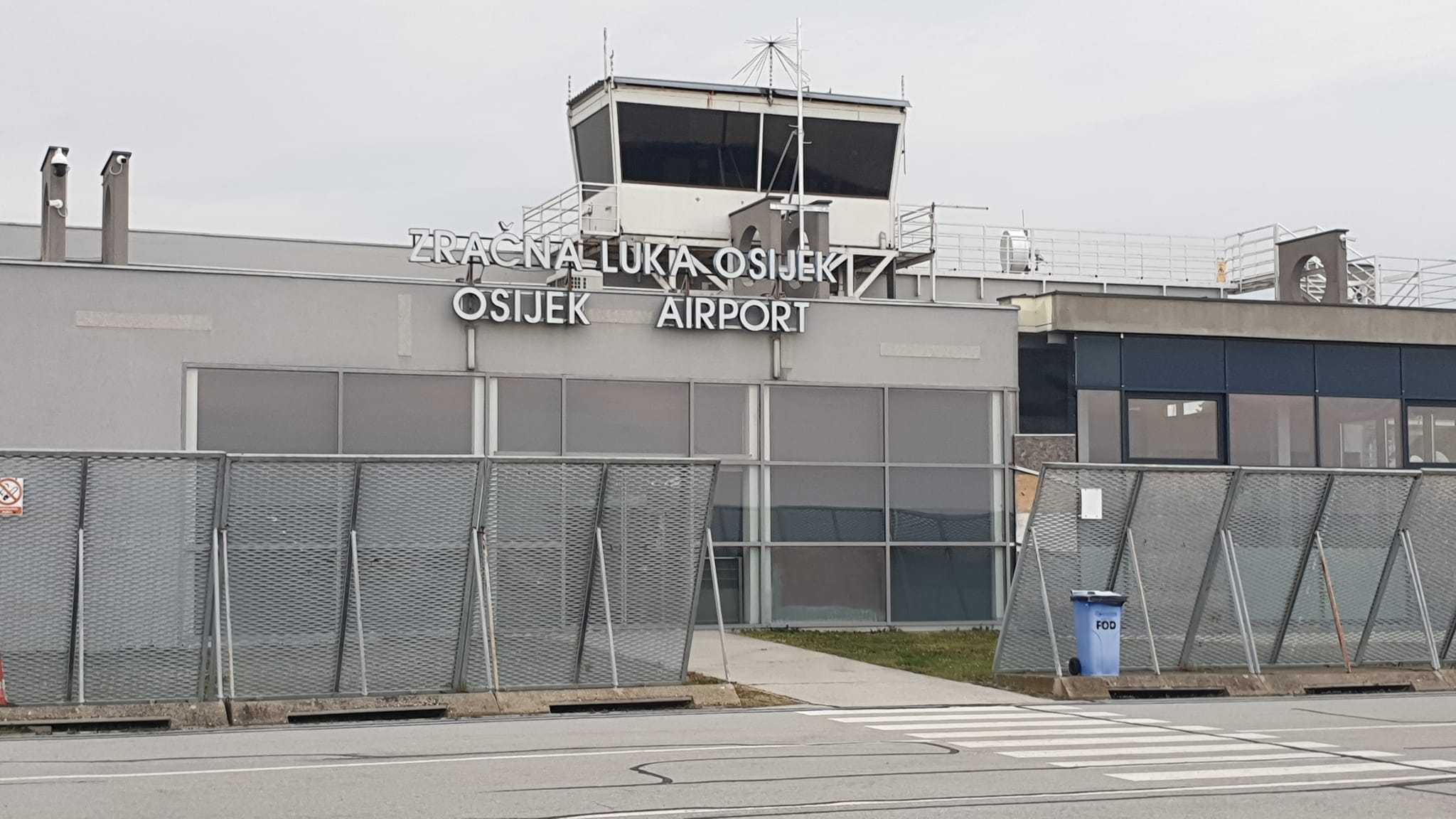
Having started at the newly developed Dubrovnik Airport terminal, followed by a stop in fashionablee Split. arrival at Osijek Airport was a reminder of where eastern Croatia lies in the government’s list of priorities. So much potential out east, so much magic, but so little interest or meaningful investment from Zagreb.
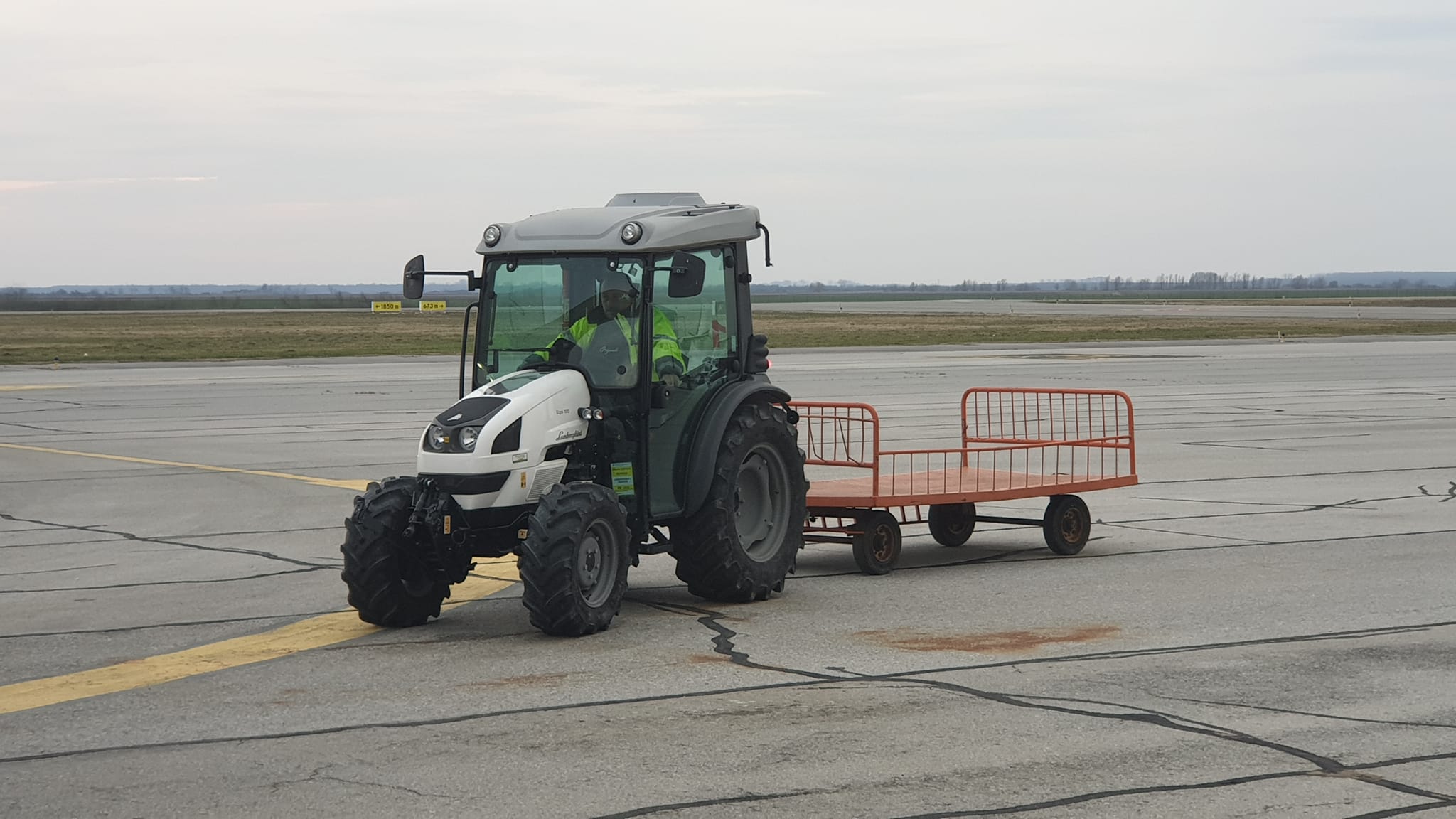
Arrival time 16:55, a few minutes early. One of the few flights of the day, and the airport was largely deserted. But as for the passenger experience and price, more than 10 out of 10, thanks to Trade Air and the Croatian taxpayer. The PSO service is an excellent initiative and vital link for communities (even more so with Jadrolinija connecting islands by ferry), with one major exception, as I was about to find out the following morning.
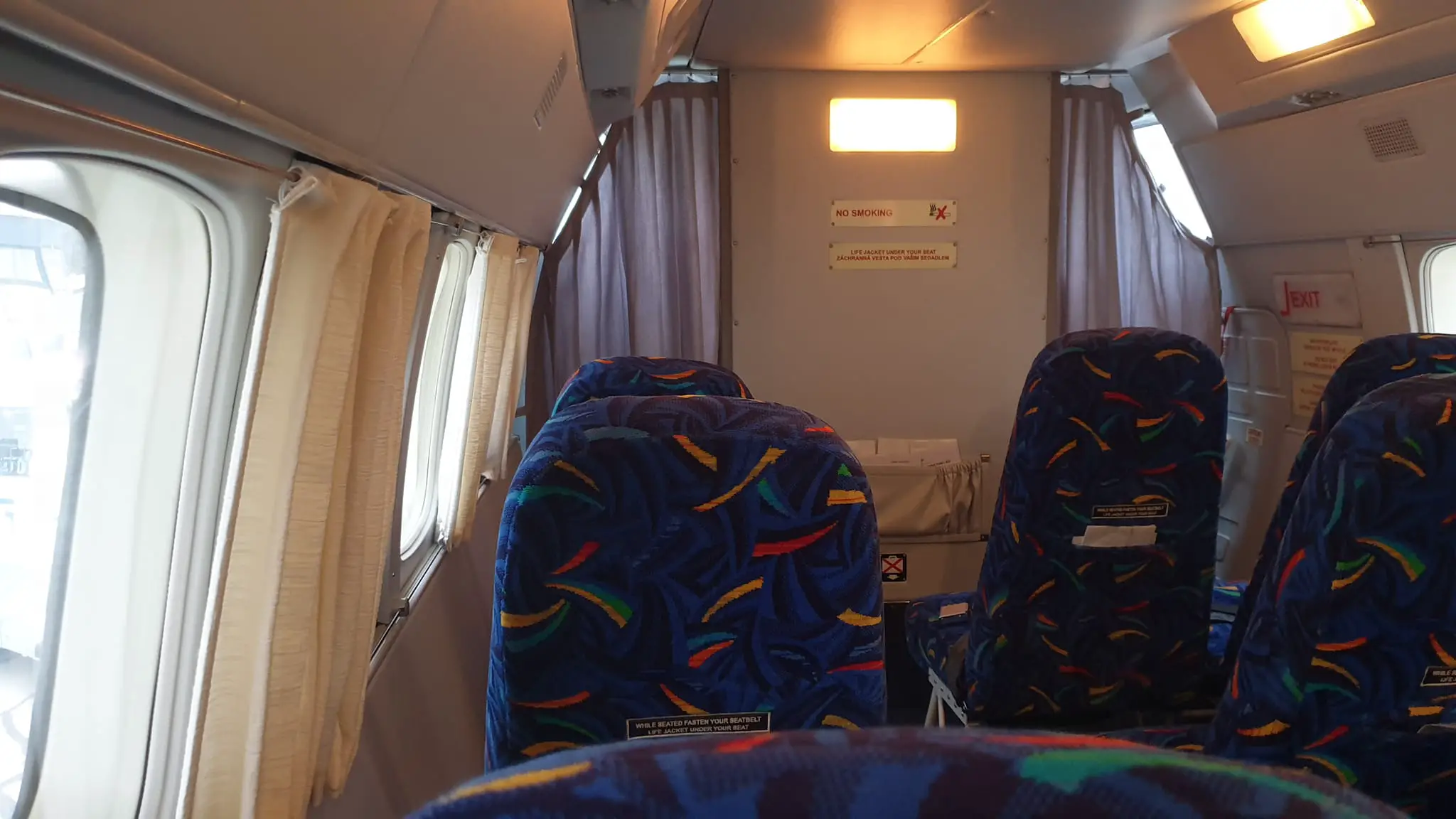
The Zagreb to Osijek flight. With the Slavonian capital starved of connectivity anywhere (one international route to Munich starting in May), and with the allocated funds which could be used to support other, more useful routes (Osijek to Dubrovnik perhaps, allowing for locals to explore their own country, visit relatives, and do business), the final leg of my 10-day trip made no sense whatsoever.
Just four people on the flight. How many are normally on it, I asked the Osijek ground crew? They smiled. Sometimes 2, something 3, almost never more than 5. Twice a day, 3 times a week. Yes it is a pointless route, they smiled, shrugging their shoulders. For 7 years now, apparently. And at what cost?
A little Googling got me to this paragraph, highlighting how insane the route is in an otherwise laudable PSO initiative:
The value of the new PSO contracts has not been disclosed. Under the previous deal, Croatia Airlines received 11.4 million euros in annual compensation for the domestic services. The largest amount, 4.2 million euros per year, went towards maintaining flights between Split and Zagreb, where the airline was remunerated some 22 euros per passenger carried, although the largest compensation per traveller was on the Zagreb – Pula – Zadar service, totalling 177 euros. The value of Trade Air’s PSO contracts amounted to 2.5 million euros per year. The largest share of the subsidies went towards the upkeep of the Osijek – Zagreb service (1.3 million euros per year), where the airline was compensated approximately 599 euros per passenger.
I checked with some airline sources, who told me that these numbers were not accurate for the latest PSO contracts (as the website said, the amounts for the latest PSO contact were not disclosed). But the numbers were an indicator of the situation. An unnecessary waste of money on an unnecessary route, with so many more useful and deserving routes either underutlised or not existing.
As I arrived at Osijek Aiport at 05:45 for the flight with just 4 passengers, the cafe was open, as was the souvenir shop. How many flights are there from Osijek today, I asked. Just two, inlcuding this one. The cafe went unvisited, the souvenir shop ignored. Total ticket sales mustered just 120 euro.
I am sure somebody, somewhere knows why we have this flight for over 7 years now. And maybe one day, someone in authority will question its use and see how to better spend the money to serve Osijek.
But in the meantime, kudos to Trade Air for operating such an efficient and punctual service. It is one I shall be using again. If you want to check out the Trade Air daily timetable and ticket prices, visit the official website.
To learn more about Osijek, check out the Total Croatia Osijek in a Page.

